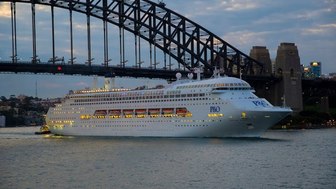New YouGov research reveals traits most likely to irritate fellow passengers
Attention public transport users! YouGov’s latest research reveals which traits people find to be the most annoying when using public transport. Read on to find out how to avoid irritating your fellow travelers.
Taking public transport can be a mixed experience. Whilst it can often be a cheaper, faster or more convenient means to reach your destination, you can never fully plan for what you will find on your journey. YouGov, the world’s leading online market research firm, asked over 9,000 public transport users in Asia Pacific what they hoped to avoid on their journey.
Coughing or sneezing without covering your mouth is a big no-no
The three most annoying traits in fellow travelers were seen to be; passengers sneezing or coughing without covering their mouth (cited by 52% of those polled), poor personal hygiene (51%) and putting feet on the seats (38%).
Older travelers are more likely to be annoyed by passengers talking loudly on their phones - 42% of those aged 55+ cited this as one of their top three most irritating experiences while, just 33% of 16-24 year olds felt the same way.
Thais are the least concerned by personal hygiene
There are also some regional variations in what annoys public transport users. Those in the Philippines are most concerned with poor personal hygiene (69%), whereas Thais are the least concerned (35%).
Using bad language is a particular problem in Vietnam, where the number of those annoyed by bad language (47%) is almost double the regional average (25%).
Residents of Hong Kong are nearly twice as likely to be annoyed by hearing loud music coming from fellow travelers’ mobiles than others; 21% find it annoying, compared to 11% regionally.
*Data was collected online between 11 to 19 Apr 2017 using YouGov’s panel of over 5 million people worldwide. It was weighted to be representative of online population within each country. Sample size: Asia Pacific (n = 9,468; Australia: 1,000; Hong Kong: 1,011; Indonesia: 1,283; Malaysia: 1,772; Philippines: 1,162; Singapore: 1,049; Thailand: 1,191; Vietnam: 1,000)









